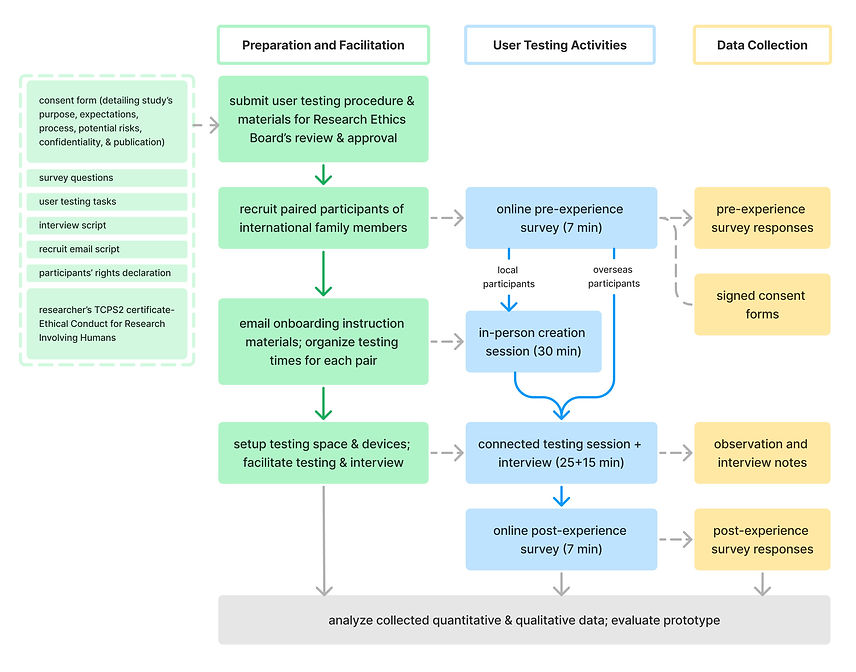top of page

Building Social Presence Using Mixed Reality for Transnational Families
Bonding Across Distances
{contextual review, virtual world building, system design, paired user testing,
Research through Design (RtD), data collection & analysis, master's thesis}

Motivated by the challenges faced in transnational family communication and a curiosity about the potential of mixed-reality (MR) technology, this study investigates how designers can utilize MR to enhance social presence in such communication. See here for documentation on the UX/UI design of the proposed system.
This study reviewed contextual sources, identified gaps, and implemented the Research through Design methodology by producing and testing iterative MR prototypes and user experiences for building social presence for transnational families.
A full account of the research process and findings is documented in a master's thesis paper, meanwhile, this webpage provides an abbreviated overview of the most important aspects of the study through diagrams and images.
Overview

Drawing on literature from fields including presence and social presence, mixed reality, transnational relationships, and technology for social presence in transnational families, this study employed the Research through Design methodology and paired user testing to create 4 iterative MR prototypes. These prototypes explored secondary research questions and were evaluated using standardized criteria.
Lastly, the study visualized an all-in-one system that streamlines and simplifies the user experience from custom asset production to optimization to utilization in a shared virtual space with transnational family members.



Research Ethics Board (REB) Approved User Testing Process
Before engaging in human-subject research, this study's user testing plans and materials were submitted to OCAD University's Research Ethics Board for review and approval, which adheres to the guidelines of the TCPS2 (2nd edition of Tri-Council Policy Statement: Ethical Conduct for Research Involving Humans). In addition, I as the researcher also completed the TCPS2 courses and obtained its certification. The diagram below illustrates the multifaceted process of user testing from preparation to participants' data collection.

Prototype 1
2D Assets (images, videos) Sharing in 3D Virtual Space



Prototype 2
3D Assets (3D scan, 360° photo) Sharing in 3D Virtual Space



Prototype 3
Transnational Family Space User Testbed
User Participation & Paired Testing Sessions












Virtual Space for Paired User Testing






User Testing Tasks and Interaction Dynamics








Prototype 4
Envisioning a Long-term, Lived-in, Virtual Family Space






Creation & Post-Processing Process
Virtual Space, 3D Scaned Object, & 360° Photo on SketchUp & Blender



Significance of This Study
The production and documentation of design artifacts, design and evaluation frameworks contribute to academic theory, industry design practices, and the transnational community.
bottom of page